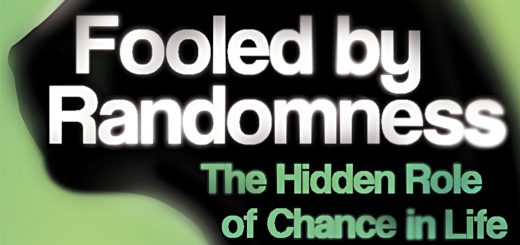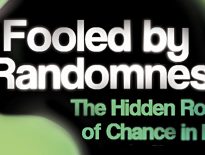Fooled By Randomness 3 – Evolution & Asymmetry

Today’s post is our third visit to Nassim Nicolas Taleb’s modern classic Fooled By Randomness.
Fooling evolution
In Chapter Five, Taleb tells the story of Carlos, an emerging-markets bond trader.
- For years he did well, as the value of EM bonds went up.
- He also bought on the dips.
But the dip in 1998 did not turn into a rally, and suddenly Carlos was bust.
- Having made $80M in previous years, he lost $300M in one summer.
In the end, his fund – and Carlos personally – were heavily invested in high-yielding Russian bonds, which collapsed in price. Taleb notes:
This, I will call the cross-sectional problem: At a given time in the market, the most successful traders are likely to be those that are best fit to the latest cycle.
Bad traders have a short-and medium-term survival advantage over good traders.
Taleb then covers the similar story of John (Nero’s neighbour) who we met in an earlier chapter.
– He was borrowing at 4.5% to buy bonds yielding 5.5% (this was a long time ago) and using a lot of leverage to juice up the returns.
- He also hedged by selling developed nations bond futures.
John was not mathematical (or indeed intelligent) and relied on his assistant Henry, who built quant models for him.
- They both lost everything in 1998, like Carlos, to what they calculated was a “ten-sigma” event.
- John had earned $250M in the previous seven years and lost $600M in a few days.
Taleb provides a list of John and Carlos’ common characteristics:
- overestimating the accuracy of their beliefs
- the dollar was overpriced in the 1980s
- they refused to abandon their positions (or their ideas)
- they changed their story as events went against them
- they had no plan for what to do when things went wrong
- they were in denial about what was happening
In a nutshell, buying the dip worked from 1992 to 1998, and then suddenly it didn’t.
Evolution
Many amateurs believe that plants and animals reproduce on a one-way route toward perfection. Companies and organizations are, thanks to competition, irreversibly heading toward betterment. The strongest will survive; the weakest will become extinct.
But with randomness, sometimes evolution moves sideways, and sometimes even backwards.
And when randomness changes shape – what Taleb calls a regime change – things become even more complicated and surprising.
Owing to the abrupt rare events, we do not live in a world where things “converge” continuously toward betterment. Nor do things in life move continuously at all.
Taleb quotes the overthrow of calculus by quantum mechanics here.
The “best” operators in a given business can come from a subset of operators who survived because of overfitness to a sample path – [one]that was free of the evolutionary rare event.
The longer these [businesses] can go without encountering the rare event, the more vulnerable they will be to it.
It is a sobering thought that the dominant companies of a particular decade are rarely still dominant a couple of decades later.
Evolution means fitness to one and only one time series, not the average of all the possible environments.
Skewness
Taleb introduces skewness with the story of the essayist and scientist Steven Jay Gould, who was diagnosed with stomach cancer.
- The median survival period was eight months, but the expected (average, mean) survival was much longer.
In fact, those who made it past eight months often went on to live to a normal age.
This prompted Gould, who understood the hard way the concept of skewness, to write his heartfelt piece “The Median Is Not the Message.”
A median does not fully describe a probability distribution.
In gambling, where the odds and the payoff may both be asymmetrical, it may not be rational to bet on something with very high odds of success, if the loss on failure is large enough.
- Yet most people confuse the probability of success with the expected return and would bet anyway.
- The symmetric distribution seems ingrained in most people.
The distinction between probability and expectation means that it is possible to be simultaneously bullish and bearish about a market.
It is not how likely an event is that matters, it is how much is made when it happens.
Rare Events
Taleb makes a living from rare events – he places skewed bets.
I believe that rare events are not fairly valued, and that the rarer the event, the more undervalued it will be in price.
Taleb also believes that people have a psychological bias against betting on rare events.
- I agree with him, but there are complications.
People do like to bet on things going against them (by buying insurance).
- Indeed, such is the demand that insurance is overpriced and you can make money by selling insurance.
But people only buy insurance for events that they can imagine.
- Indeed, they buy insurance for events that are highly salient, like the possibility of their house burning down.
The events that Taleb bets on are the ones that people find unimaginable – the black swans. Thus they are underpriced and he can make money from them.
Rare events are always unexpected, otherwise they would not occur.
Taleb thinks that finance borrowed the idea of ignoring the rare event from science, where outliers are frequently discarded.
- The practice is also common in academia (grading) and weather forecasting (Taleb thinks that global warming might have been spotted sooner without this).
He notes that most options (90%+) expire worthless, which suggests that there is money to be made from selling them.
But of course, it depends on the relative returns and losses from winning and losing, not just the frequencies.
History
Common statistical method is based on the steady augmentation of the confidence level, in nonlinear proportion to the number of observations. That is, for an n times increase in the sample size, we increase our knowledge by the square root of n.
Taleb also warns against taking history as indicative of the future. What if things have changed?
In the beginning, I wondered whether the time series reflecting the activity of people now dead or retired should matter for predicting the future.
Studying the European markets of the 1990s will certainly be of great help to a historian; but what kind of inference can we make now that the structure of the institutions and the markets has changed so much?
Taleb refers to Nobel Prize winner Robert Lucas:
If people were rational then their rationality would cause them to figure out predictable patterns from the past and adapt, so that past information would be completely useless for predicting the future.
Of course, people are not rational, and if behavioural traits persist, the past may be of some use.
- But Taleb is not convinced. (( Of the usefulness of history, not of irrationality ))
Conclusions
That’s it for today.
- We’ve breezed through another couple of chapters today, and are on course to complete the book in seven articles (plus a summary).
Next up are induction and the millionaires next door.
- Until next time.














